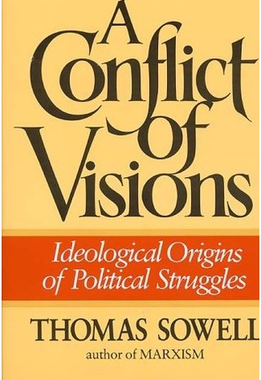
A Conflict of Visions
A Conflict of Visions is a book by Thomas Sowell. It was originally published in 1987; a revised edition appeared in 2007.[1] Sowell's opening chapter attempts to answer the question of why the same people tend to be political adversaries in issue after issue, when the issues vary enormously in subject matter and sometimes hardly seem connected to one another. The root of these conflicts, Sowell claims, are the "visions", or the intuitive feelings that people have about human nature; different visions imply radically different consequences for how they think about everything from war to justice.
Author
United States
English
January 1987
273 pp.
Preferential Policies
The rest of the book describes two basic visions, the "unconstrained" and "constrained" visions, which are thought to capture opposite ends of a continuum of political thought on which one can place many contemporary Westerners, in addition to their intellectual ancestors of the past few centuries.
The book could be compared with George Lakoff's 1996 book Moral Politics, which aims to answer a very similar question.
Sowell's book has been published both with and without the subtitle "Ideological Origins of Political Struggles".
Steven Pinker's book The Blank Slate calls Sowell's explanation the best theory given to date.[2] In his book, Pinker refers to the "unconstrained vision" as the "utopian vision" and the "constrained vision" as the "tragic vision".[3]